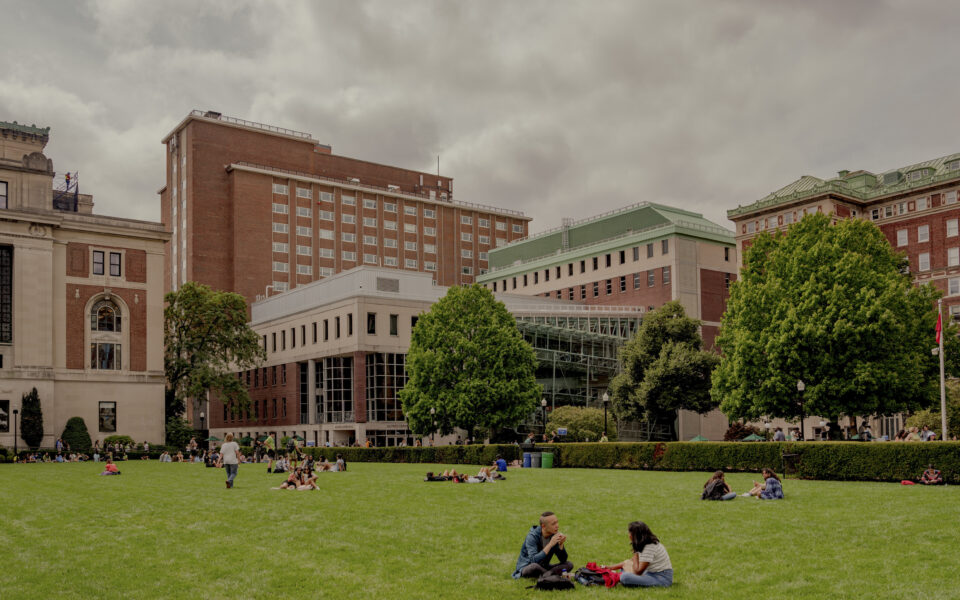Yale, Duke and Columbia among elite schools to settle in price-fixing case

For almost a quarter of a century, a coterie of the nation’s most elite universities had a legal shield: They would be exempt from federal antitrust laws when they shared formulas to measure prospective students’ financial needs.
But the provision included a crucial requirement: that the cooperating universities’ admissions processes be “need-blind,” meaning they could not factor in whether a prospective student was wealthy enough to pay.
A court filing Tuesday night revealed that five of those universities – Brown, Columbia, Duke, Emory and Yale – have collectively agreed to pay $104.5 million to settle a lawsuit accusing them of, in fact, weighing financial ability when they deliberated over the fates of some applicants.
Although the universities did not admit wrongdoing and resisted accusations that their approach had hurt students, the settlements nevertheless call into question whether the schools, which spent years extolling the generosity of their financial aid, did as much as they could to lower tuition.
In separate statements after the court filing, Columbia and Brown denied wrongdoing, and maintained that all financial aid decisions were made in the best interests of students and their families. Resolving the case, Brown said, will permit it to “focus its resources on further growth in generous aid for students.”
The agreements from the five universities came months after the University of Chicago agreed to pay $13.5 million to settle its portion of the case. Other schools, including Cornell, Georgetown, Johns Hopkins, the Massachusetts Institute of Technology and the University of Pennsylvania, remain mired in the litigation, with no trial date set.
The sprawling lawsuit targeted 17 schools, which were, or had been, members of the 568 Presidents Group, named for the legal provision that offered antitrust cover. The case contended that universities did not actually abide by the need-blind admissions mandate when they deliberated over wait-listed applicants, making their financial aid protocols illegal.
Vanderbilt University, for example, said on one of its websites in 2018 that it reserved “the right to be need-aware when admitting wait-listed students,” echoing previous statements by university employees.
Vanderbilt, located in Nashville, Tennessee, told the court last year that it planned to settle.
By considering need in any context, the suit argued, the universities were defying the conditions of their antitrust exemption. Complicating the path for the universities, the case drew muscle from a legal doctrine that holds that members of a group are responsible for actions of others in the same group.
Ultimately, the suit claimed, about 200,000 students over about two decades were overcharged because the 568 Group had eliminated competition on cost, leaving the net price of attendance “artificially inflated.”
Had universities more aggressively competed over financial aid, the lawsuit said, students could have received more support and spent less to attend college.
The antitrust shield expired in 2022, and the 568 Group has disbanded.
Although the University of Chicago said the suit was “without merit” when it settled the case, it agreed to share records that could be valuable in the litigation against the other universities.
A handful of other universities have since made similar calculations, admitting no fault while limiting both their financial exposure and the risk of damaging revelations surfacing in records or depositions.
“Though we believe the plaintiffs’ claims are without merit, we have reached a settlement in the best interest of our continuing focus on providing talented scholars from all social, cultural, and economic backgrounds one of the world’s best undergraduate educations and the opportunity to graduate debt-free,” Vanderbilt, which is still finalizing its settlement, said in a statement.
For plaintiffs, the planned settlements offer an advantage, beyond the surge of money to divide among students and lawyers: By whittling the ranks of the defendants, they also streamline a case that could prove exceptionally complex at a trial.
Emory and Yale are both expected to pay $18.5 million, and Brown is settling for $19.5 million. Columbia and Duke have agreed to pay $24 million each. Separately from Tuesday’s filing, Rice University said in a recent financial statement that it had agreed to pay almost $34 million.
In their filing Tuesday, lawyers for the plaintiffs said the settlements “were not achieved as a group or all at once, but instead were separately pursued over the course of time.” The lawyers added that they had “pursued a strategy of increasing the settlement amounts with each successive agreement or set of agreements to exert pressure on non-settling defendants to reach agreement imminently or risk having to pay significantly more by waiting.”
Financial aid practices at elite universities have long drawn antitrust scrutiny. In the late 1980s, the Justice Department opened an inquiry into price-fixing, leading to a string of settlements in the 1990s as Ivy League schools sought to dodge potentially titanic legal fights. (MIT refused a settlement at first and opted for a trial. It later reached an agreement with the government, too, with the settlement’s language becoming something of a template for Section 568.)
In a filing last year, the Justice Department signaled its support for some of the legal arguments underpinning this current civil case that schools are settling.
This article originally appeared in The New York Times.






